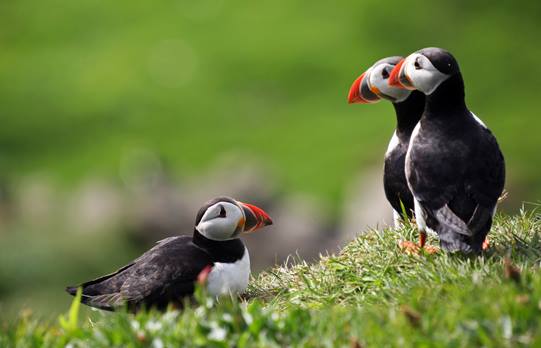Nature and Wildlife
Photo: Lavur Fredriksen/www.visitfaroeislands.com/
The Faroese climate is classified as a Maritime Subarctic climate. The weather is shaped by the presence of the North Atlantic Current, guaranteeing mild winters and cool summers. The average temperature during winter is 3° and 11° during summer.
Mostly windy, and cloudy, the islands have about 260 rainy days annually and sunshine days are a rare sight. During winter nights are long and days short, down to 5 hours of sunlight. During summer it is barely dark and days can be as long as 19, 5 hours.
The Faroese wildlife consists predominantly of birds. Located on the north-western coast of Streymoy are the Faroese Vestmanna bird cliffs or nesting cliffs. These are the homes and the nesting grounds for thousands of seabirds. The seas surrounding the Faroe Islands serve as an abundant food supply for the birds, making the Faroe Islands the place with the highest concentration of birds in the Atlantic.
Among the typical species seen are the Common Murre, Thick-billed Murre, Razorbill, Kittiwake, Little Auk and Atlantic Puffin. The island of Nólsoy has the world’s largest colony of European Storm Petrel. The Oystercatcher is the Faroese national bird and returns to the islands around the beginning of March. Throughout spring and summer the Oystercatcher’s, or in Faroese Tjaldur’s, call can be heard all over the country.
To read more about the nature and wildlife of the Faroe islands, visit: https://visitfaroeislands.com/en/about1/nature-environment/nature

